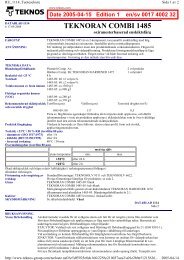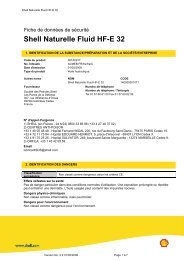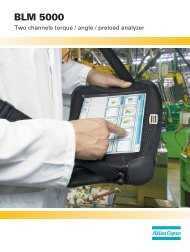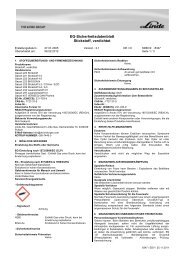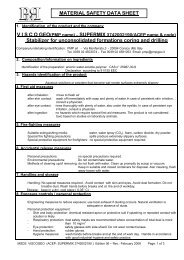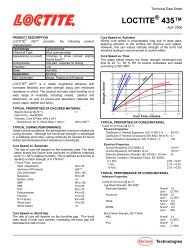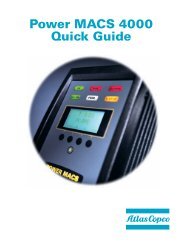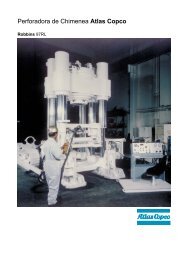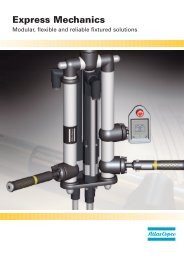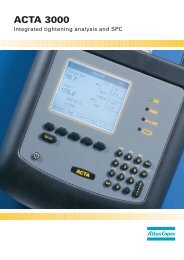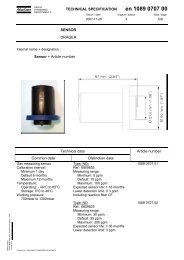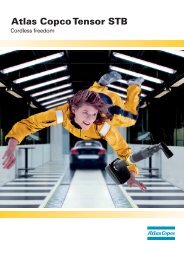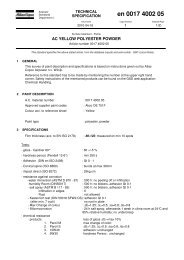Ergonomics - Atlas Copco
Ergonomics - Atlas Copco
Ergonomics - Atlas Copco
Create successful ePaper yourself
Turn your PDF publications into a flip-book with our unique Google optimized e-Paper software.
Shocks into a<br />
mechanical system<br />
The tool and the hand-arm system can be<br />
considered as a mechanical system. The<br />
theory of vibration and shocks tells us that<br />
the response from a mechanical system ex-<br />
posed to a shock is a function of the duration<br />
of the impulse and the natural frequency<br />
of the tool/hand-arm system. The latter<br />
depends on the posture of the hand and is<br />
therefore closely related to the design of the<br />
workstation.<br />
The response<br />
The response can be defined as the amplitude<br />
of the motion of the tool handle due to the<br />
shock. An operator’s subjective perception of<br />
the shock reaction is closely related to the am-<br />
plitude of the motion of the tool handle. The<br />
displacement of the handle during tightening<br />
could be a measure of the probable subjective<br />
response from the operator using the ma-<br />
chine. The displacement is, however, not easy<br />
to measure during actual operation.<br />
International Standard<br />
Another method of quantifying shock re-<br />
action is proposed in the ISO 6544 standard<br />
of 1981. According to this standard, the tool<br />
is held with its handle resting against a stop.<br />
Torque during tightening is measured with<br />
an in-line transducer and the impulse is<br />
calculated by integrating the torque signal<br />
versus time for various joints.<br />
This type of test set-up ignores the<br />
dynamic properties of both the tool and the<br />
operator.<br />
Machine design<br />
The mechanical development of angle nut-<br />
runners has followed two separate paths<br />
– pneumatic tools and electric tools.<br />
In pneumatic tools, the design concept<br />
has been to minimize the impulse. A key<br />
element here is the clutch. Pneumatic angle<br />
nutrunners are provided with an extremely<br />
fast clutch. When the tool reaches its preset<br />
final torque, the clutch disengages the<br />
motor from the gear train in 3.5 ms. This<br />
fast action improves the accuracy of the tool<br />
and the part of the impulse resulting from<br />
the disengagement action is very small.<br />
In practice, this means that when the<br />
tools are used on hard joints the operator<br />
can hold the tool handle between his thumb<br />
and index finger and not experience any<br />
shock because it will be absorbed by the<br />
inertia of the tool.<br />
For softer joints it takes longer to build<br />
up the torque, which increases the impulse<br />
99



